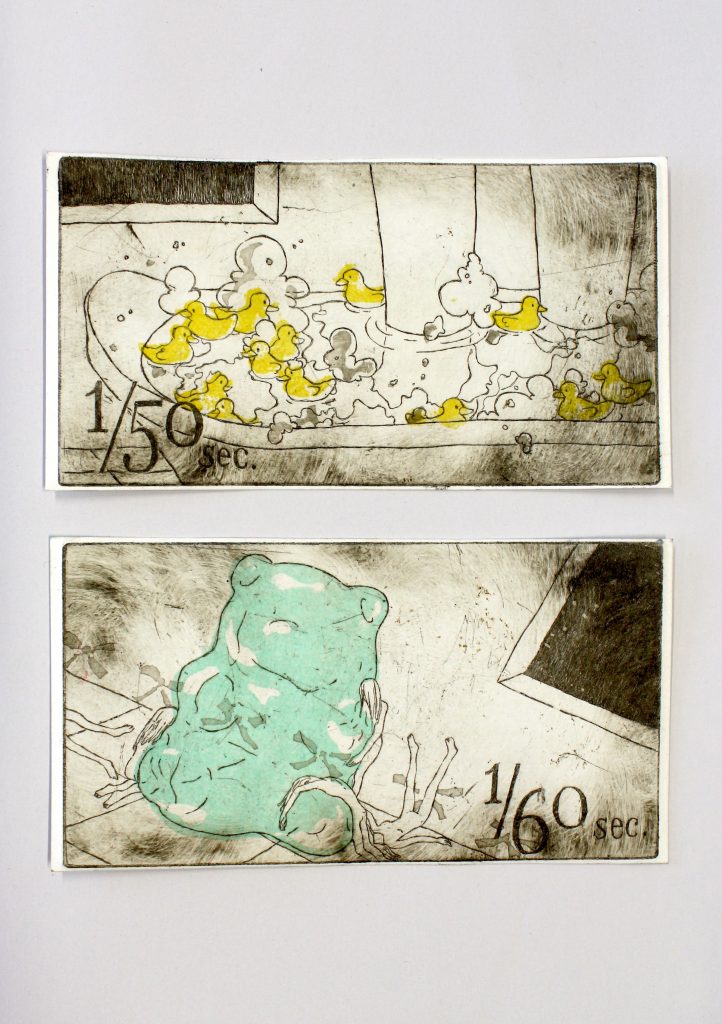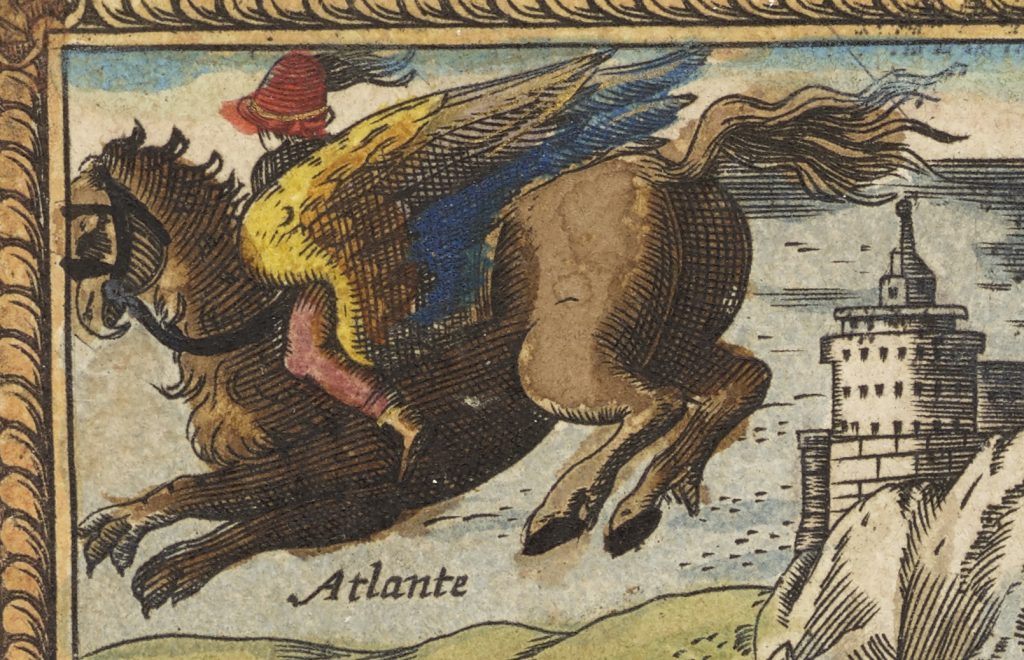Hippogriffs, Rabbits, Skyship Ports and Mars: Fantasy Worlds

In our third visit to the student Notgeld and its connections with the exhibition, we move into the realms of fantasy. Some of the students realised that while their Notgeld needed a sense of place, they could improve on the world we have, and design for a better one.
Let us start by letting Naomi Sun lead us to the best of better places: Utopia:
“Here is UTOPIA.
A place for you to escape from the REAL.
You can finally be YOU,
though that will not be long.”
“Tickets are limited.
Please collect your notes and use them wisely.”
We were particulary impressed with Naomi’s work, as she was the only student to use etching to produce her notes.

Sammi Duong looked to Space, and made a better world on Mars:
“These banknotes are made for a future when we inhabit Mars and are named after the Mars Rover. Together they narrate the process in which humans made Mars habitable.
They were made digitally on Photoshop then risograph printed with red and gold ink.”

Zhaoyang Chen invented a world of rabbits.
“I designed these notes for an imaginary country populated by rabbits. The name of this country is Rabiland, I got the inspiration from Zootopia. The design and layout of the notes are based on modern Chinese notes.”
These also explore space: the third note of the set, which is in the exhibition but not illustrated here, shows the rabbits in very natty space suits.

Shannon Law and Valeria Mogilevskaya have both invented imaginary lands.
Shannon:
“My notes (Oceys) are for a fantasy fishing village that I based around some creative writing that my friend and I worked on. It originally was a market town with watchtowers surrounding it, I changed this due to the colour palette I was using and the style of buildings that were evident in medieval fishing villages.”

Valeria
“Ythers’Narth is a fictional country in a steampunk world, it is a mountainous and beautiful country which presents a scenic idyllic lifestyle to the rest of the world but in reality the strict laws and controlling government make life there far from free. These notes, issued by the capital city and carefully monitored by the nobility show parts of the country people are meant to look up to – the rich history and older civilization Ythers’Narth gets its name from and its people are descended from; the picturesque mountain ranges and fields of golden wheat; the immensely popular sky ship ports that people from all over the world fly to.”

The other exhibits some imagined lands – there are the examples from our collection of American comics, Batman, Spiderman and the irresistably-named “Ms. Tree”, which we cannot reproduce here for copyright reasons.
However, we can reproduce a fantasy creature, which would be worthy to inhabit any of the students’ fantasy lands. A hippogriff, from Ludovico Ariosto’s Orlando Furioso. In the story the knight Astolfo travels by hippogriff to Ethiopia (which is clearly off the edge of the page), to seek a cure for Orlando’s madness, brought on by being jilted in love.

Hippogriff, from Orlando Furioso






